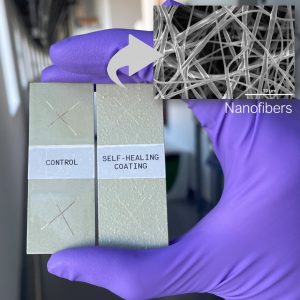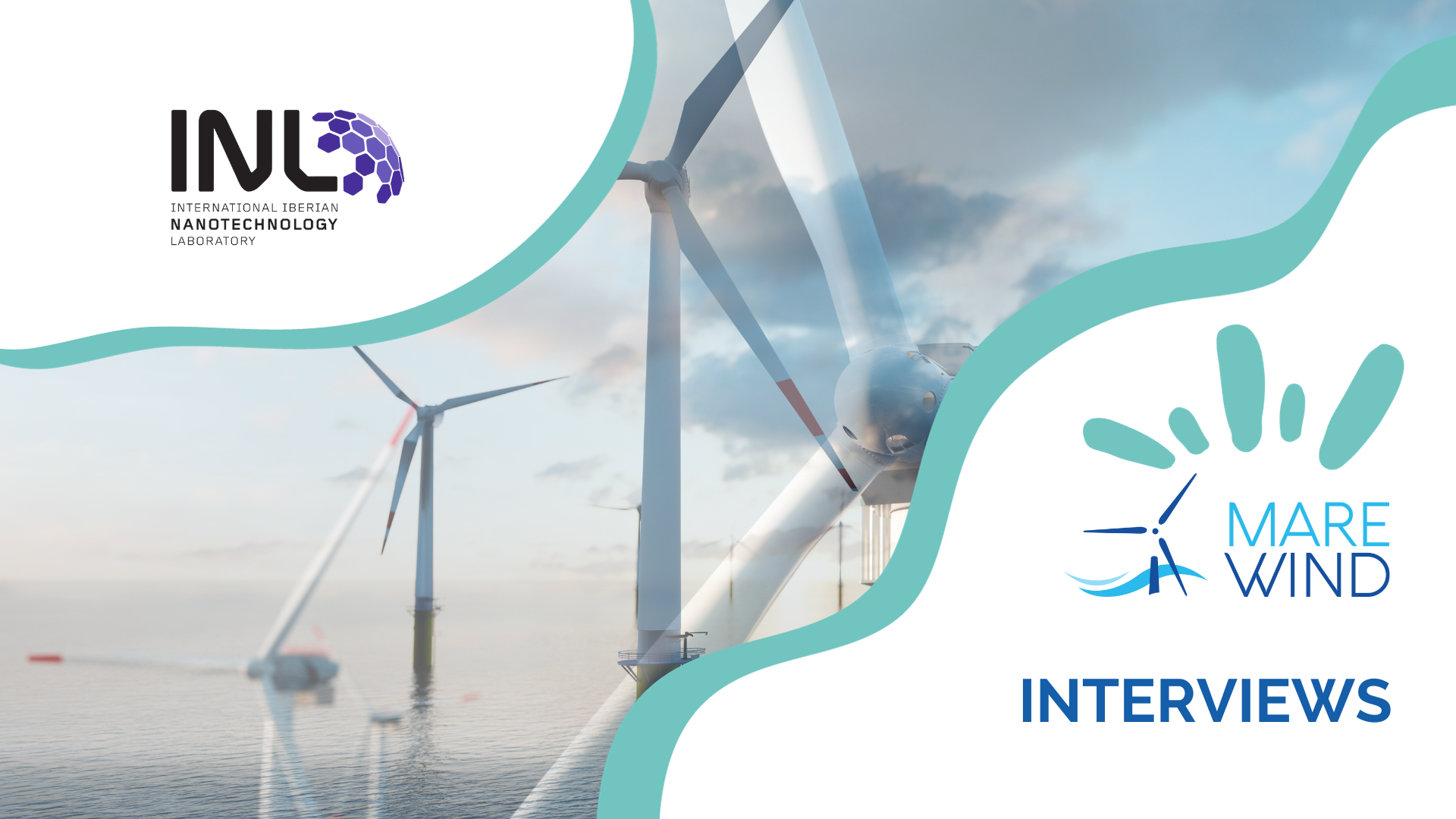INL, crucial for developing corrosion protection to offshore wind structures
01 February 2024
Why did you join the MAREWIND project and what’s your role?
As a dedicated research institute, INL is committed to advancing environmental sustainability and engaging in project’s tackling critical issues. In this context, the development of materials capable of enhancing the longevity of offshore wind structures perfectly aligns with our institute’s research goals. At INL, we take responsibility for developing the materials with self-healing properties. Our efforts led to the development of core-shell nanofibers with self-healing properties that is triggered by a mechanical damage. This healing mechanism is autonomous, only requiring the presence of humidity.
As experts on nanoscience, how are you contributing to the European renewable energy targets?
At INL, our specialisation lies in creating cutting-edge materials customised for various applications. Our focus spans environmental catalysis for purifying water and air, along with the creation of functional coatings. Moreover, our expertise extends to the development of electrocatalysts centered around transition metals. These catalysts are designed specifically for the hydrogen evolution reaction, with the aim of presenting a viable substitute for critical raw materials.

What are the main solutions you are exploring to face challenges in the framework of offshore wind industry?
Within the MAREWIND project, our primary objective was to create a self-healing anticorrosive coating to enhance protectiveness, durability and longevity of these structures. Besides this project, we also have been working on the development of bio-friendly fluoride and biocide free solutions for UV resistance, IR reflectance, superhydrophobic, and anti-biofouling coatings for marine applications.
In the MAREWIND project, what are the main challenges when developing self-healing materials to protect theses offshore structures from corrosion?
During the project, we faced several challenges. Firstly, creating defect-free core-shell fibers while employing a water-reactive, non-conductive materials as the self-healing agent. Secondly, dispersing these core-shell fibers within the polymeric formulation to facilitate application using spray techniques.
What are the main results you have achieved/you expect to achieve as partner in the MAREWIND project?
We have successfully develop innovative self-healing materials designed to provide corrosion protection to offshore wind structures.
How do you see the future of the MAREWIND project?
By tackling key elements concerning material durability and maintenance and encompassing a range of ambitious goals, we are confident that MAREWIND will provide tangible solutions and significantly impact the materials utilised within the offshore industry.

